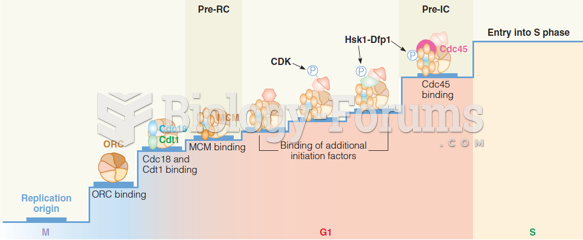Answer to Question 1
Correct Answer: 1,2
Rationale 1: As drugs stay in the body for prolonged periods, the risk for long-term adverse effects increases. This can become particularly serious for clients with significant renal impairment; diminished metabolism and excretion will cause the plasma half-life of a drug to increase, and the concentration may reach toxic levels.
Rationale 2: As drugs stay in the body for prolonged periods, the risk for long-term adverse effects increases. This can become particularly serious for clients with significant hepatic impairment; diminished metabolism and excretion will cause the plasma half-life of a drug to increase, and the concentration may reach toxic levels.
Rationale 3: Gastrointestinal disease does not increase the risk of adverse drug effects.
Rationale 4: Cardiac disease does not increase the risk of adverse drugs effects.
Rationale 5: Pulmonary disease does not increase the risk of adverse drug effects.
Global Rationale: As drugs stay in the body for prolonged periods, the risk for long-term adverse effects increases. This can become particularly serious for clients with significant renal impairment; diminished metabolism and excretion will cause the plasma half-life of a drug to increase, and the concentration may reach toxic levels. Gastrointestinal disease does not increase the risk of adverse drug effects. Cardiac disease does not increase the risk of adverse drugs effects. Pulmonary disease does not increase the risk of adverse drug effects.
Answer to Question 2
Correct Answer: 2
Rationale 1: The drug does not have to concentrate in muscle tissue in order to relieve pain.
Rationale 2: The goal of therapy is to reach and maintain a plasma level in the therapeutic range.
Rationale 3: The client might experience some pain relief at a minimum effective concentration but probably not optimal pain relief.
Rationale 4: A toxic concentration does not need to be reached in order to achieve pain relief; in fact, it should be avoided.
Global Rationale: The goal of therapy is to reach and maintain a plasma level in the therapeutic range. The drug does not have to concentrate in muscle tissue in order to relieve pain. The client might experience some pain relief at a minimum effective concentration but probably not optimal pain relief. A toxic concentration does not need to be reached in order to achieve pain relief; in fact, it should be avoided.







